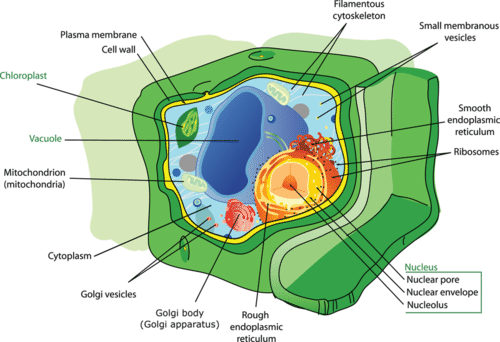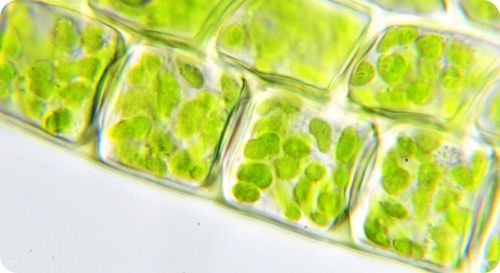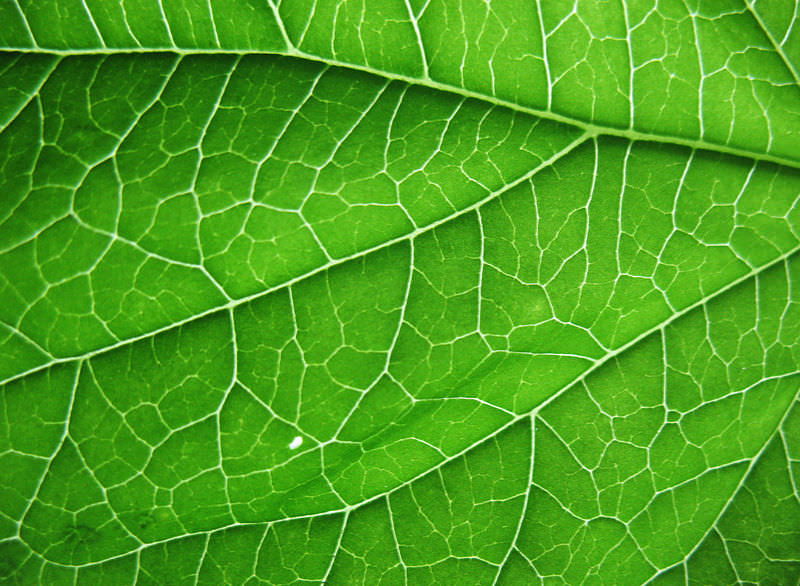2.23: Estructura de la Célula Vegetal
- Page ID
- 108127
¿Las plantas tienen células como las tuyas?
Sí, tus células en realidad son muy similares a las células de una planta. Por ejemplo, ambas son células eucariotas, ambas contienen ADN en un núcleo, y ambas producen proteínas en los ribosomas. Sin embargo, las células vegetales también difieren en algunas formas cruciales de sus propias células.
Células vegetales
Aunque tanto las plantas como los animales son eucariotas, las células vegetales difieren de alguna manera de las células animales (Figura a continuación). Las células vegetales tienen una gran vacuola central, están rodeadas por una pared celular, y tienen cloroplastos, que son los orgánulos de la fotosíntesis. La fotosíntesis convierte la energía solar del sol en energía química. Esta energía química, que es la glucosa carbohidrato, sirve como “alimento” para la planta.

Vacuolas
Primero, las células vegetales tienen una gran vacuola central que contiene una mezcla de agua, nutrientes y desechos. La vacuola de una célula vegetal puede representar el 90% del volumen de la célula. La gran vacuola central almacena esencialmente agua. En las células animales, las vacuolas son mucho más pequeñas.
Pared celular
Segundo, las células vegetales tienen una pared celular, mientras que las células animales no (Figura a continuación). La pared celular rodea la membrana plasmática pero no impide que las sustancias entren o salgan de la célula. Una pared celular le da fuerza y protección a las células vegetales.

Plastidios
Una tercera diferencia entre las células vegetales y animales es que las plantas tienen varios tipos de orgánulos llamados plastidios. Y hay varios tipos diferentes de plastidios en las células vegetales. Por ejemplo, los cloroplastos son necesarios para la fotosíntesis, los leucoplastos pueden almacenar almidón o aceite, y los cromoplastos de colores brillantes dan a algunas flores y frutos su color amarillo, naranja o rojo. Es la presencia de cloroplastos y la capacidad de fotosintetizar, esa es una de las características definitorias de una planta. Ningún animal u hongo puede fotosintetizar, y sólo algunos protistas son capaces de hacerlo. Los protistas fotosintéticos son los protistas similares a plantas, representados principalmente por las algas unicelulares.
Resumen
- Las células vegetales y animales difieren en que las plantas tienen una gran vacuola central, mientras que los animales tienen vacuolas más pequeñas.
- Las células vegetales también tienen paredes celulares y plastidios, mientras que las células animales no.
Explora más
Utilice el siguiente recurso para responder a las siguientes preguntas.
- Animación de células vegetales y animales - Células vivas en http://www.cellsalive.com/cells/cell_model.htm
- Comparar y contrastar las vacuolas de células vegetales y las vacuolas de células animales.
- ¿Cómo es similar la apariencia de los tilacoides a la apariencia del aparato de Golgi?
- ¿Qué tipo de membrana tienen los cloroplastos? ¿Qué otro orgánulo tiene un tipo similar de membrana?
- ¿Qué características tienen en común las células vegetales con las células animales?
Revisar
- ¿Cuáles son las tres estructuras que se encuentran en las células vegetales pero no en las células animales?
- ¿Cuál es el papel del cloroplasto?
- ¿Cuál es el papel principal de la vacuola vegetal?


